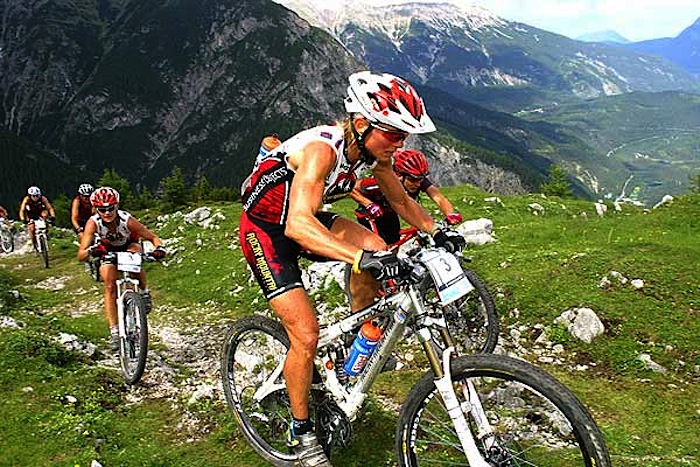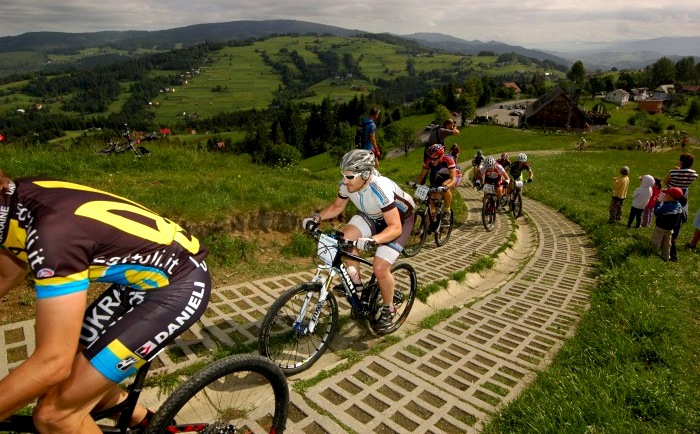
Climbing is one of the most important cycling skills to possess, especially on a mountain bike where variations in terrain, steepness and surface are common. Having adequate skills to master all conditions is vital; then it becomes just a matter of greater fitness, which comes with more time on the bike. What's not to like?
Getting your position right is the first step to mastery. Good position starts at the local bike shop and involves being correctly fitted on your bike, with your saddle and handlebar set up to allow for optimal power transfer and maximum comfort. This is important when you really start pushing your limits on a decent hill.
DID YOU KNOW? Climbing on an MTB is all about being balanced on your bike to get as much grip and traction from your tires as possible. This is why a dual suspension bike can out-climb a technically more efficient hardtail on rugged, technical tracks; the suspension helps the tires 'hug' the ground, creating more grip and less 'slippage'. How the power is delivered is often more important than how much power is generated.
1. Stay calm and relaxed
What has this got to do with position? Keeping calm is number one when lining up for a good climb. You're just setting yourself up to fail if you approach the hill in an "I can't do it" panic with white knuckles and a locked up upper back and neck.
Relax your hands, firm not tight on the bars, and let go of your shoulders. As your neck loosens and your shoulders drop you will feel your lungs expand..."I can breathe again!" This is your climbing baseline.
2. Discard the mind
It will probably upset some people saying this, but positive thinking sucks, don't do it. The "I can do this, I can do this" crowd are actually convincing themselves they can't! Using your mind to create positive control creates more resistance to be overcome. A better way is to acknowledge the pain, fear, strain or whatever you go through and just love it! Become responsible for your attitude, not the outcome.
Positive thinking is just staring at one side of a coin and trying to convince yourself that the other side isn't there...no matter how long you stare, it is still a coin, and you then end up suppressing the truth. Go with, not against.

Photo: marathonmtb.com
3. In the saddle and spin
If possible, stay in your saddle. This can be difficult at first, especially if you haven't yet developed good core and quad strength, but should definitely be practised. Standing up burns more energy as you carry your body weight and pedal at the same time. Sitting in the saddle spinning an easier gear utilises more of your aerobic system which, while resulting in cardiovascular strain, doesn't lead to muscle fatigue as quickly as out of the saddle power bursts. This is key to riding long climbs. In the saddle and spin. Notice how these guys above are sitting and leaning forward on a steep climb?
4. Leaning forward and 'out of the saddle'

Photo: vitalmtb.com
Shifting weight on a bike doesn't necessarily mean moving your bum on or off the saddle. As the gradient increases just lean your chest forward and lower over the bars. The purpose of this method is to put weight on the front wheel so it doesn't wander, while still retaining the ability to put down all your power. Sometimes though, the gradient dictates that it is best to get out of the saddle and wind up some big efforts!

TIP: While leaning forward is a good position to tackle steeper sections on long climbs, it is good practice to vary your position when possible so you can utilise different muscle groups. Leaning forward activates your buttocks (ever noticed a sore lower back from a sustained long climb?), while sitting in an upright position brings your quads (thighs) into action. In addition to this, putting in some 'out of the saddle' efforts will give you a good kick for tackling the short steep pinches and makes you a better all-round climber.
5. Keep a regular breathing rhythm
Scrabbling and gasping for air is a pretty uncomfortable way to ride! Keep your breathing regular. I use my pedal cadence as a metronome and try to focus on the exhale. I sometimes even set up a rhythm like three regular exhales, followed by a bigger more forced exhale. I even sometimes do this to a song hummed to myself. Remaining calm and relaxed is key to climbing comfortably. By consciously exhaling you remove a lot of carbon dioxide from your lungs and bloodstream; this is a good thing! The beauty of combining your breathing and pedalling is that it helps you relax and stay riding 'within' yourself.

TIP: It is easy to remain mindful of breathing when on a regular climb, but what about those super steep rocky sections where it is power out of the saddle? True; breathing is hard to regulate during anaerobic efforts. The trick is to remain mindful of your breathing while riding all out. Are you holding your breathe? At the completion of the effort are you allowing yourself to purge the CO2 build-up?
This is part 1 of mountain bike climbing. The next part will focus on different situations and terrain and how to tackle them. In the meantime get out there and climb some hills!


